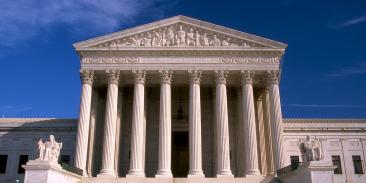More Dire Colorado River Reservoir Forecasts Reinforce Urgent Need for Action
Statement by Kevin Moran, AVP, Regional Affairs, Environmental Defense Fund
(PHOENIX, AZ — August 15, 2025) The Bureau of Reclamation released its August 24-Month Study for Colorado River reservoirs today that projected Lake Mead’s elevation on Jan. 1, 2026, would be 1,055.88 feet, requiring Arizona to contribute 512,000 acre-feet in reductions, or about 18% of its annual apportionment; Nevada to contribute 21,000 acre-feet, or 7% of its annual apportionment; and Mexico to contribute 80,000 acre-feet, or 5% of its annual allotment. Lake Powell’s elevation on Jan. 1, 2026, is projected to be 3,538.47 feet — approximately 162 feet below full pool and 48 feet above minimum power pool.
“This latest dire forecast for Colorado River reservoirs is yet another reminder of how many communities in the Colorado River Basin, particularly in Arizona, are now facing a double water crisis because both the Colorado River and groundwater are being depleted much faster than they can be replenished. It follows the release of new research from Arizona State University that found since 2003, the quantity of groundwater depleted in the Colorado River Basin is comparable to the total capacity of Lake Mead, the nation’s largest reservoir. In much of rural Arizona, where groundwater withdrawals are unregulated, communities face mounting water-related risks to people, farms, and businesses. And less Colorado River water for Central Arizona makes science-based, sustainable groundwater management in the state’s Active Management Areas even more urgent.
Muddling through year after year following the dogmas of the past is not a strategy to adapt and thrive. The mindset, resources, and management that got us to where we are today must evolve to meet the undeniable new water reality in the basin. Whether it’s water underground or in the Colorado River, all stakeholders must work together to more holistically and proactively manage this vital resource. New thinking, additional resources, and flexible rules and agreements are needed to resolve the water security crisis facing many rural Arizona communities and protect the Colorado River as basin conditions continue to change.”
With more than 3 million members, Environmental Defense Fund creates transformational solutions to the most serious environmental problems. To do so, EDF links science, economics, law, and innovative private-sector partnerships to turn solutions into action. edf.org
Latest press releases
-
Trump Administration’s New Tax Credit Guidance Is “Another Senseless Attack on Clean Energy”
August 15, 2025 -
More Dire Colorado River Reservoir Forecasts Reinforce Urgent Need for Action
August 15, 2025 -
EDF, UCS Ask Court to Enjoin Trump Administration’s Brazenly Unlawful Use of Corrupt “Science” Report
August 15, 2025 -
Independent Report Finds that the Trump Administration’s Orders to Keep Coal-fired Power Plants Running Could Cost Consumers between $3-6 Billion a Year
August 14, 2025 -
EDF Strongly Opposes Trump Administration Proposals to Eliminate Protections for Air Pollution from Power Plants
August 13, 2025 -
Some Truck Makers Challenge Vital Clean Truck Partnership with California
August 12, 2025











